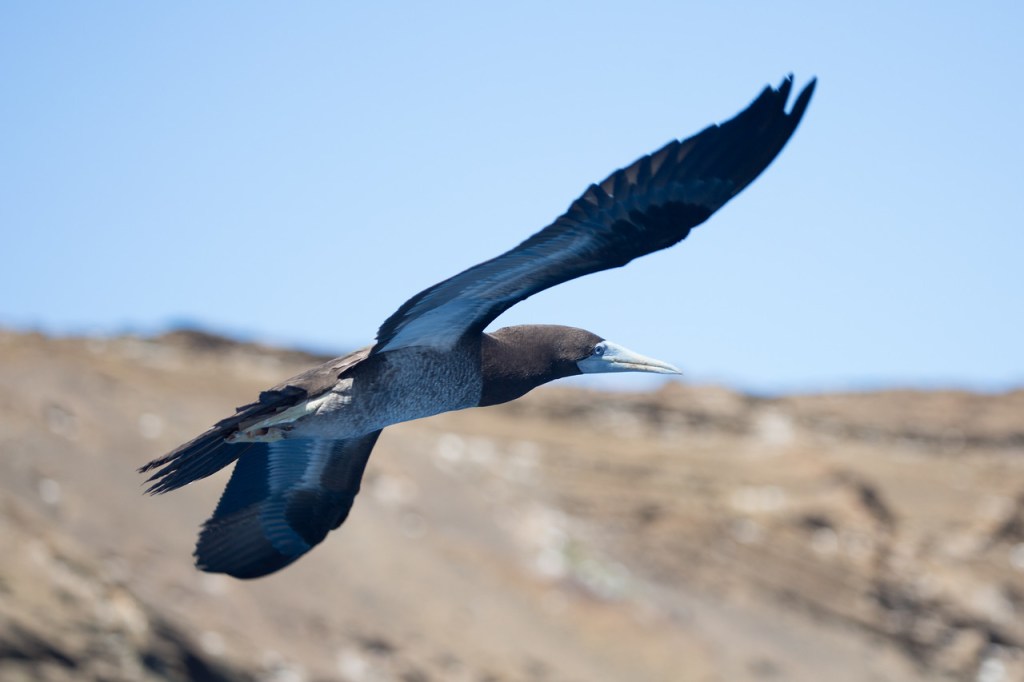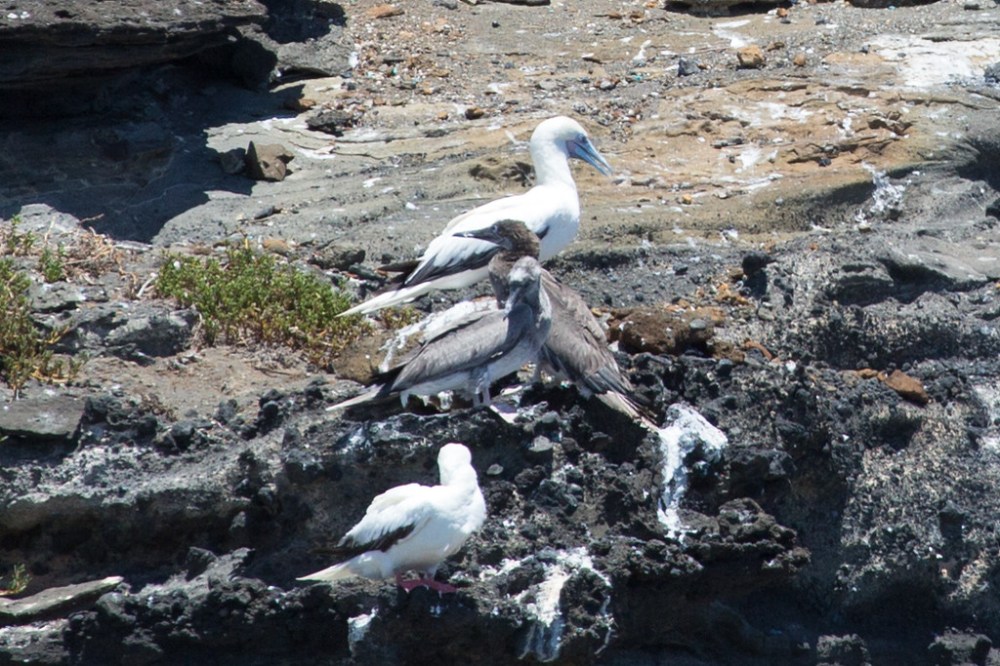Endemic Birds of Hawaiʻi
Have you ever wondered about the birds on Kauaʻi? And no, I’m not talking about all the colorful roosters and hens moving freely about the island, but rather, where did all the birds come from that we see here in the Hawaiian Islands today? How did they get here, and when? Which birds are native, or endemic, to Hawaiʻi, and how are they faring in numbers today? Are you curious about the threats to Hawaiʻi’s endemic bird populations and how you can join the conservation train? If so, this blog is for you.

Endemic Birds: Then & Now
Endemic is defined as “belonging or native to a particular people or country,” and Hawaiʻi has quite a stunning and extensive list of endemic birds. (1) According to the Department of Land and Natural Resources (DLNR), “Prior to the arrival of humans to the Hawaiian archipelago, the islands supported an incredibly diverse and unique avifauna comprised of at least 113 endemic species.” (2)
These native birds seemingly struck gold when they landed in Hawaiʻi and settled themselves on the untouched, flourishing island chain. Birds like the flightless geese, Hawaiian Honeycreepers, rails, and ibis thrived on the islands for many years. (3) Unfortunately, with the arrival of the Polynesians and then the Europeans, the unique endemic bird populations suffered a catastrophic hit.
So, just how many endemic birds are left in Hawaiʻi today? The DLNR says,
Since human colonization, 71 birds have been confirmed lost, 48 prior to the arrival of Europeans, and 23 since Captain Cook first arrived in 1778. Of the 42 extant endemic taxa, 31 are federally listed (29 species and 2 subspecies), but 10 of these have not been observed in as many as 40 years and are of unknown status. (4)
Key Factors Leading to Extinction
Major threats to Hawaiʻi’s endemic bird populations include habitat loss, invasive plants and animals, disease, climate change, hurricanes, and fires. (5)

Habitat Loss
Forest birds were significantly impacted when the Polynesians cleared large forest areas for agriculture. (6) This practice of clearing, or burning, was intensified with the arrival of Europeans who transformed Kauaʻi’s native forest land for cattle ranching, urban development, and timber harvesting. (7)
Invasive Plants & Animals
Invasive plants considerably changed the land and native forest landscape in Hawaiʻi. Humans introduced invasive plants that replaced many diverse native plants. These monotypic (single-species) plants spread like wildfire, and soon Kahili ginger, miconia, and strawberry guava covered the land, pushing out the native forest, home to the endemic forest birds. (8)
Invasive animals also play a crucial role in destroying the natural ecosystem and directly impacting Hawaiʻi’s endemic bird populations. The endemic birds of Hawaiʻi were (and are) not equipped to protect themselves from the invasive animals that the Polynesians and Europeans introduced.
Feral goats and pigs ravage the land, directly disturbing the delicate flora and fauna that the native birds depend on for survival. These feral animals propagate invasive plant species, contributing to the spread of the monotypic plants. (9) Feral cats, rats, mongoose, and barn owls are also dangerous to endemic birds and prey on native bird nests, eggs, and birds and are directly linked to the rapid decline in native bird numbers. Additionally, rats compete for food sources once reserved solely for the endemic birds. (10)
Non-native birds are also responsible for the drastic drop in endemic bird survival. The Kauaʻi Forest Bird Recovery Project states that,
More than 170 species of birds have been introduced to the Hawaiian Archipelago since the arrival of humans, and fifty-four of those have established wild populations today. These birds have evolved resistance to the parasitic and viral pathogens that they brought with them when introduced to Hawaiʻi, and can act as carriers. (11)
Disease & Climate
Diseases play a key factor in the dwindling endemic bird numbers. The introduced house mosquitoes carry diseases that kill native birds (12). The two most common and detrimental diseases to the endemic bird populations via mosquitoes are avian malaria and avian poxvirus. (13) Avian poxvirus can also be passed via bird-to-bird contact and through infected perches. (14)
The mosquito population is rampantly rising due to unchecked natural forces like cold temperatures, frost, and snow, which kill mosquitoes in colder climates. To escape mosquitoes in Hawaiʻi, native birds have retreated to higher elevations where the air is cooler, with less mosquito breeding and parasite development. (15) Unfortunately, however, due to climate change, forests on the highest mountains in Hawaiʻi are now susceptible to warmer temperatures year-round, which will most likely result in the spread of even more diseases to native birds. (16)
Hurricanes & Fires
Hurricanes and fires are considerably dangerous to Hawaiʻi’s endemic bird populations, as many of these birds are localized in small niches and prone to complete devastation via these natural occurrences.
Kauaʻi experienced two major hurricanes in 1983 and 1992. The Kauaʻi Forest Bird Recovery Project states that these hurricanes are responsible for “… destroying and degrading native forest bird habitat, by creating gaps into which alien plants could expand, spreading invasive plants, and felling large canopy trees that are the favored nest sites of some species, such as ʻakikiki.” (17) The kamaʻo and other forest birds have not been seen since Iniki. (18)

Hawaiʻi’s Endemic Birds Today: Forest Birds, Waterbirds, Seabirds & Migration Birds
The DNLR states that,
Hawaiʻi’s forest birds are world-famous for their diversity, beauty, and (unfortunately) their rarity. Of 84 forest bird species we know of, 28 species are considered “prehistoric,” meaning they are only known from the fossil record and were extinct before modern record keeping began for bird observations. Of the remaining 56 species that existed in Hawaiʻi during its era of human habitation, 30 have gone extinct or are presumed to be extinct. That leaves just 26 forest bird species still in existence today, and 24 of those species are listed by the International Union for the Conservation of Nature as vulnerable, near-threatened, threatened, endangered, or critically endangered. Only two native forest bird species are designated as having healthy populations that are of the “least concern” for extinction risk: the ʻapapane and the Hawaiʻi ʻamakihi. (19)
The 26 endemic forest birds of Hawaiʻi are truly special and include: ʻIo, Pueo, ʻAlalā, Kauaʻi ʻElepaio, Oʻahu ʻElepaio, Hawaiʻi ʻElepaio, ʻŌmaʻo, Puaiohi, Ulūlu or Nihoa Millerbird, Hawaiʻi ʻAmakihi, Oʻahu ʻAmakihi, Kauaʻi ʻAmakihi, ‘I‘iwi, ʻAkiapōlāʻau, ʻApapane, Palila, ʻAkekeʻe, ʻAlawī or Hawaiʻi Creeper, ʻAnianiau, ʻAkikiki, ʻĀkohekohe, Maui ‘Alauahio, Kiwikiu, Laysan Finch, and the Nihoa Finch. (20)
 Waterbirds
Waterbirds
There are seven native birds found in Hawaiʻi’s fresh waters. Keep your eye out for the following waterbirds: Koloa maoli (Hawaiian duck), ‘Alae ‘ula (Hawaiian common moorhen), ‘Alae ke‘o ke‘o (Hawaiian coot), Nēnē (Hawaiian goose), Ae‘o (Hawaiian stilt), ʻAuku‘u (Black-crowned night heron), and the Laysan duck. (21)
Seabirds
Watch the ocean and sky to catch site of the 23 species of beautiful endemic seabirds still soaring along Hawaiʻi’s coastline and skimming the ocean’s waves. They include: Mōli (Laysan albatross), Ka‘upu (Black-footed albatross), Koa‘e kea (White-tailed tropicbird), Koa‘e ‘ula (Red-tailed tropicbird), ‘Ou (Bulwer’s petrel), Bonin petrel, ‘Ua‘u (Hawaiian petrel), ‘Akē‘akē (Band-rumped storm petrel), Tristram’s (sooty) storm petrel, ‘Ua‘u kani (Wedge-tailed shearwater), ‘A‘o (Newell’s shearwater), Christmas shearwater, Manu-Ō-ku (White (fairy) tern), ‘Ewa‘ewa (Sooty tern), Pākalakala (Gray-backed tern), Noio (Hawaiian black noddy), Noio kōhā (Brown noddy), Blue-gray noddy, ‘Ā (Masked (blue-faced) booby), ‘Ā (Brown booby), ‘Ā (Red-footed booby), ‘Iwa (Great frigatebird), and the Short-tailed albatross (migratory). (22)
Migratory Birds
The following nine native birds still travel to and from the Hawaiian islands. Watch the changing seasons for the following endemic migratory birds: Kōlea (Pacific golden plover), ‘Akekeke (Ruddy turnstone), Koloa mapu (Northern pintail), Koloa moha (Northern shoveler), Lesser scaup, Hunakai (Sanderling), ‘Ūlili (Wandering tattler), American wigeon, and the Kioea (Bristle-thighed curlew). (23)
Programs and Conservation Efforts
While we can’t do anything to bring back the already-extinct endemic birds of Hawaiʻi, we can focus on how to protect the ones we still have. The DLNR is committed to just that, stating,
Our integrated approach emphasizes basic research to understand the biology of particular species, mitigation and control of threats and limiting factors, ecosystem restoration and protection of suitable managed habitat, education and outreach, and captive propagation and reintroduction programs. (24)
Here is a list of organizations and programs working to save the remaining native birds, especially those who are currently threatened and endangered: Kauaʻi Forest Bird Recovery Project, Maui Forest Bird Recovery Project, Kauaʻi Endangered Seabird Recovery Project, The Department of Land and Natural Resources, Hawaiʻi’s State Wildlife Action Plan, Pacific Rim Conservation, American Bird Conservancy, Hawaiʻi Division of Forestry and Wildlife, Nā Koa Manu Conservation, National Park Service, and the U.S. Fish & Wildlife Service to name a few.
Together, through concentrated efforts in our daily actions, environmental stewardship, and implementing important conservation efforts, we can make a difference that positively impacts the future of Hawaiʻi’s endemic birds.
(1): https://www.merriam-webster.com/dictionary/endemic
(2-4, 19-23): https://dlnr.hawaii.gov/wildlife/birds/
(5-18): https://kauaiforestbirds.org/threats-to-birds/
(24): https://dlnr.hawaii.gov/wildlife/projects/
